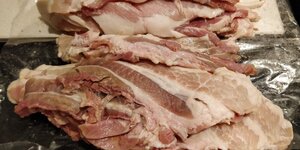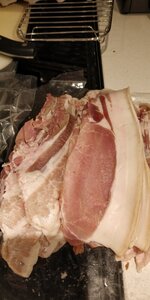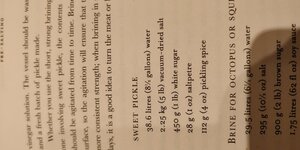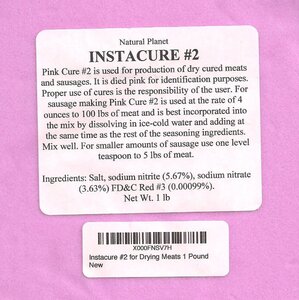How old is that recipe ????
You are correct about the grey color of the meat.... Saltpetre has no effect on refrigerated meats... The nitrate must be converted to nitrite by active natural bacteria found in meat.... Those bacteria will not "wake up" an do their job until the meat is at a temperature of ~ 50-55F... It is a very slow process...
Modern curing uses a mix of Sodium Nitrite (6..25%) and Salt in cure#1 or..... In cure#2 Sodium Nitrite ~6.25%, Sodium Nitrate ~(0.5% to 3.63% or more depending on manufacturer) and is designed for use in meats that are not cooked...
The water, salt and sugar = 36,100 grams weight...
Saltpetre at 28 grams = ~700 PPM... I don't know the % nitrate in KNO3...
Meat processing
Potassium nitrate has been a common ingredient of salted meat since
antiquity[25] or the
Middle Ages[26]. The widespread adoption of nitrate use is more recent and is linked to the development of large-scale meat processing.
[27] The use of potassium nitrate has been mostly discontinued because of slow and inconsistent results compared to
sodium nitrite compounds such as "Prague powder" or pink "
curing salt". Even so, potassium nitrate is still used in some food applications, such as salami, dry-cured ham,
charcuterie, and (in some countries) in the
brine used to make
corned beef (sometimes together with
sodium nitrite).
[28] When used as a food additive in the European Union,
[29] the compound is referred to as
E252; it is also approved for use as a food additive in the United States
[30] and Australia and New Zealand
[31] (where it is listed under its
INS number 252).
[3]
May I suggest, you purchase "cure#1" for short term curing like sausages, bacon etc...
Maybe get this book by Marianski for a basic book to jump start your venture into curing meats...
Seems the Kindle editions are updated as changes are made... I have both paper and kindle...
Then, perhaps later, some of his other books....

















